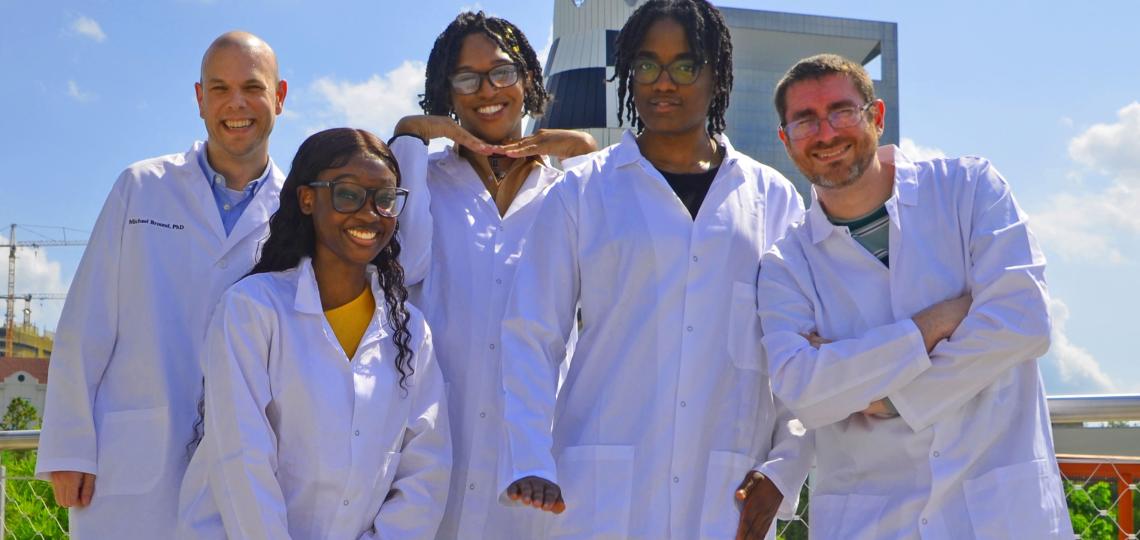
About The Lab
The Bround Lab studies mitochondrial biology with an emphasis on heart and skeletal muscle physiology and disease. Mitochondria are important organelles which serve as the powerhouse and molecular forge of the cell, generating energy and building many cellular components. We study how cells communicate with their mitochondria to coordinate energy production and maintain mitochondrial quality control, but also how mitochondria participate in cell death and disease. The Bround Lab utilizes molecular biology, cell biology, and animal physiology experiments to study mitochondrial function from the protein level to the intact organism. We are interested in learning how to maximize mitochondrial function in health and how to prevent mitochondria-dependent cell death in heart disease, muscular dystrophy, and Alzheimer’s disease. We also study rare genetic diseases such as Wolf-Hirschhorn Syndrome, Progressive External Ophthalmalgia, and Barth Syndrome which are caused by mutations in mitochondrial genes.
The Bround Lab is currently studying how mitochondrial calcium (Ca2+) signaling controls energy metabolism and cell death on a molecular level. We have recently demonstrated that mitochondria have uncharacterized influx and efflux mechanisms that are sufficient to cause mitochondrial overload and activate cell death. We have projects in our lab deciphering the molecular identity of these unknown mitochondrial Ca2+ transporters to better understand mitochondrial biology and to potentially treat disease. We have also recently demonstrated that the adenosine nucleotide translocase (ANT) proteins are integral components of the mitochondrial permeability transition pore (MPTP). We have found that preventing the MPTP from activating can eliminate over 90% of disease in muscular dystrophy. The Bround Lab is currently working to understand how ANT proteins, which are critically important for cell metabolism, can function as both metabolic transport proteins and a toxic mitochondrial pore. The goal of this research is to design new anti-necrotic therapeutics for diseases such as muscular dystrophy and Alzheimer’s disease. We are also pursuing research into how mitochondrial Ca2+ signals promote energy metabolism, the molecular regulation of mitochondrial quality control, and mitochondrial thermogenesis. As part of our research, we test how these fundamental mitochondrial processes contribute to physiology in the heart and skeletal muscle in health and disease.
Key areas of interest
> Mitochondrial biology
> Cellular metabolism
> Mechanisms of cell death
> Calcium signaling
> Molecular mechanisms of disease
> Heart, Muscle, and Neural Biology








